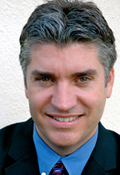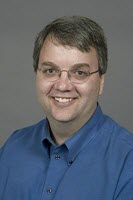 It’s been four years since the National Academy of Sciences published its landmark study of forensics in the US — Strengthening Forensic Science in the United States – A Path Forward (commonly known as ‘the NAS report’). The report was nothing short of a “bombshell,” detailing the substantial scientific deficiencies of essentially all forensic disciplines, with the exception of DNA. A report by the National Registry of Exonerations, covering 873 wrongful convictions from 1989 to 2012, shows that “false or misleading forensics” was a contributing cause in 24% of those cases. The NAS report has been previously covered on this blog here and here.
It’s been four years since the National Academy of Sciences published its landmark study of forensics in the US — Strengthening Forensic Science in the United States – A Path Forward (commonly known as ‘the NAS report’). The report was nothing short of a “bombshell,” detailing the substantial scientific deficiencies of essentially all forensic disciplines, with the exception of DNA. A report by the National Registry of Exonerations, covering 873 wrongful convictions from 1989 to 2012, shows that “false or misleading forensics” was a contributing cause in 24% of those cases. The NAS report has been previously covered on this blog here and here.
The NAS report was met with “stonewall” and dismissive resistance by the extant forensic community, as well as the National Association of District Attorneys. This is not surprising, since the members of these groups have much personally invested in the existing (but scientifically invalid) methods of forensics – not the least of which is careers. The inertia to be overcome in “fixing” forensics is monumental, and for this reason, many of us in the innocence world (this editor included) feared that the NAS report would languish on the bookshelves of the legislators.
I am happy to report, however, that a significant first-step action is now underway at the federal level. The Justice Department has announced that, in cooperation with the National Institute of Standards and Technology (NIST), it is forming the National Commission on Forensic Science. The commission will have responsibility for developing guidance concerning the intersections between forensic science and the courtroom and developing policy recommendations, including uniform codes for professional responsibility and requirements for training and certification.
Now, before jubilation sets in, note that the commission’s responsibilities are described as “guidance” and “recommendations.” The commission has not been endowed with the powers of oversight, enforcement, or establishing standards. So, clearly, this is just a first step in the journey toward “fixing” forensics. But as the old proverb says, “A journey of a thousand miles begins with but a single step.” Nothing is going to happen quickly, but it is a start, and we’ll take it.
The following story from the Washington Post by Spencer Hsu details the plan:
U.S. to commit scientists and new commission to fix forensic science
The federal government announced Friday that it will commit a scientific agency and launch a national commission to tackle recurring concerns about the quality of forensic evidence used in criminal courts across the country.
A new National Commission on Forensic Science will draft proposals for the U.S. attorney general and Justice Department and draw from expert groups led by a Commerce Department science agency, the National Institute of Standards and Technology, the departments announced.
“This initiative is led by the principle that scientifically valid and accurate forensic analysis strengthens all aspects of our justice system,” said Deputy Attorney General James M. Cole.
The announcement marked the broadest federal commitment to establishing national forensic science standards since the rise of the FBI Laboratory during the last century. It comes four years after the National Academy of Sciences urged the White House and Congress to remove crime labs from police and prosecutors’ control or at least to improve standards for crime labs, examiners and researchers. The academy was responding to a drumbeat of crime lab scandals and hundreds of DNA exonerations over the past two decades.
The new 30-member commission will be co-chaired by Justice Department and NIST officials. It will include forensic scientists, researchers, prosecutors, defense attorneys and judges, and will meet several times a year as a federal advisory committee subject to open government requirements.
Most significantly, experts said, it could replace or reorganize the ad hoc groups of practitioners who now govern individual forensic techniques with teams administered by NIST.
Critics have long complained that such groups worked in secret, were too closely tied to the FBI or law enforcement and followed no standard practices, and that such weaknesses were reflected in the variability of how individual crime labs obtain and testify about results.
Senate Judiciary Committee Chairman Patrick J. Leahy (D-Vermont) welcomed the announcement and noted “striking similarities” between the commission and forensic science reform legislation he first introduced in 2011.
“Today’s announcement is an important first step,” Leahy said in a statement, adding that he will continue to push for stronger oversight of crime labs, enforcement mechanisms and federal funding. “I will continue working to ensure that comprehensive legislation is considered and ultimately signed into law.”



















Pingback: Death Investigation in the US – Medical Examiner or Coroner? | Wrongful Convictions Blog
OBut I don’t understand — Francis Galton thought it was valid in 1892. That’s not good enough for you? Who cares what the NAS says. If it was good enough for other courts for 100 years then why should validity and reliability be demanded now? Courts accepting it for all that time is reliability enough, right? I mean, that “testing in the adversary system,” so it has been tested and we just don’t care whether it’s “scientifically” valid. This is about convicting guilty people. Not a science anyway. (But we will pretend it is when we are before juries.). Stop questioning the science. The fingerprint examiner says he can match and Galton thought so too so that is enough.
Pingback: NSF to Support Forensics Research | Wrongful Convictions Blog
Pingback: Progress on the Road to Valid, Reliable Forensics | Wrongful Convictions Blog
Pingback: Book Review: “Forensic Science Reform – Protecting the Innocent” | Wrongful Convictions Blog